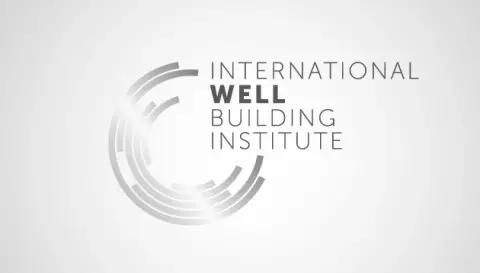According to Liza Young, The Well Building Standard is the first evidence-based system used to certify, measure and monitor building features that impact occupants health and wellbeing. A WELL Certified building or office means it has passed tests ensuring occupant happiness and wellbeing factors are fine-tuned to give the healthiest workspace possible.
is the first evidence-based system used to certify, measure and monitor building features that impact occupants health and wellbeing. A WELL Certified building or office means it has passed tests ensuring occupant happiness and wellbeing factors are fine-tuned to give the healthiest workspace possible.
Also, with the growing demand for green construction, the WELL Building Standard strives to ensure that sustainable design principles along with environmental footprints, operational costs, and energy use are applied to building and office construction. The eight components that make WELL an essential set of best practices go a long way towards making sure that building occupants are not negatively affected by their workplace environment.
WELL Building Standard
Launched in 2014, the WELL Building Standard is the first building certification in the world that focuses on human wellness and health exclusively. This international assessment procedure encourages active lifestyles and healthy eating choices along with promoting a high standard of air quality and natural light based on 7 years of medical, architectural and scientific research. With a different focus, WELL goes broadly into the wellbeing of the people.
American organization, Delos, is the founders of International Well Being Institute (IWBI). They have one important aim: to improve workplace environments by placing health and wellness at the center of design and construction. Their mission is to “build a better world.” IWBI believes in seven factors, which, together, constitute and form the kind of environment that is best suited for any workplace and its employees.
is the founders of International Well Being Institute (IWBI). They have one important aim: to improve workplace environments by placing health and wellness at the center of design and construction. Their mission is to “build a better world.” IWBI believes in seven factors, which, together, constitute and form the kind of environment that is best suited for any workplace and its employees.
Today some organizations are getting rewards for investing in wellbeing and comprehensive, holistic health programmes, which leads to a more productive workforce and increased employee engagement. Because of these reasons, WELL is undoubtedly becoming a benchmark for wellbeing and health in the workplace.
The WELL Building Standard has the potential to reduce the concerns of sustainability by focusing on the ever-growing issues of a healthy workplace.
Why WELL was Created?

WELL is administered and managed by the International WELL Building Institute (IWBI), which is a public benefit corporation. The mission of IWBI is to improve human wellbeing and health through the built environment. WELL is certified by the GBCI, Green Business Certification Incorporation that administers the LEED professional credentialing program and the LEED certification program.
How The WELL Standard Works?
WELL, measures office and building attribute that impacts the health of an occupant by focusing on eight areas – Fitness, comfort, air, water, mind, nourishment, light, and Innovation. The standard has 100 features that are applied to each project and are categorized as preconditions, compliance or optimizations (optional enhancements).
A project survey showed that team members working in the WELL space felt 86 percent more productive. The conference room in this WELL space has also received 43 percent more use than the more traditional office conference room. Staff and visitors notice and praise the new environment.
Facility managers seeking to create the most productive and healthiest workspace can follow the WELL Building Standard as a guide on where to spend their funds.
8 Features of WELL Building Standard
The WELL Building Standard combines best practices of construction and design with evidence-based, proven strategies for improving wellness and health.
Eight Factors of WELL Building Standard

1. Air
Air quality has a significant impact on occupant health and wellness. Polluted air can cause several respiratory issues and also trigger asthma and allergies. The WELL Building Standard helps in improving air quality and minimizing indoor pollution. WELL feature #2, Smoking  ban requires a ban on e-cigarettes indoors. Moreover, it provides managers pursuing WELL certification guidance on cleaning protocols and air filter selection.
ban requires a ban on e-cigarettes indoors. Moreover, it provides managers pursuing WELL certification guidance on cleaning protocols and air filter selection.
2. Light
One of the major causes of headaches and eyestrain is lighting levels. However, if the lighting levels are appropriate, these conditions can be avoided. Low lighting can strain occupant’s eyes and increase the risk of general visual discomfort and glare.
Also, when we spend a lot of time indoors in artificial light conditions, this impacts our circadian rhythms which directly impacts sleep quality. WELL provides illumination guidelines to assist organizations in ensuring their building lighting is optimized to enhance the health and wellbeing of occupants.
3. Fitness
Research shows that on average, employee’s spend 5 hours & 41 minutes sitting at their desk every day. This sort of sedentary lifestyles leads to health problems such as diabetes, heart attacks, and increased risk of obesity. The WELL Building Standard helps address these risks by promoting movement and fitness through design, by encouraging the adoption of furniture that offers mobility, and promoting the more use of stairs.
4. Comfort
If employees are not comfortable at work, it will affect their productivity. And for some employees, if noise levels are high, it will increase their stress levels. A comfortable working environment requires accessibility to amenities, ergonomic furniture, appropriate noise levels, and temperature.
WELL Standard aims to create a comfortable environment where employees can feel at ease and work more productively. WELL Feature #73, Ergonomics : Visual and Physical requires 30% of the workstation can alternate between standing and sitting positions. Therefore, many offices are now switching to sit-stand and electronically adjusted desks and allowing occupants to adjust the height of their monitor and desk surface to optimize ergonomic seating/standing positions.
: Visual and Physical requires 30% of the workstation can alternate between standing and sitting positions. Therefore, many offices are now switching to sit-stand and electronically adjusted desks and allowing occupants to adjust the height of their monitor and desk surface to optimize ergonomic seating/standing positions.
5. Mind
Mental and physical health are closely linked. Poor health often leads to poor mental wellbeing. The indoor environment can affect mental wellness and should be developed to reduce stress levels, improve moods and promote overall health and wellness. WELL supports mental health and wellbeing by encouraging building design policies that are designed to minimize stress and support employees.
6. Water
WELL certification requires the availability and quality of water for all occupants. For instance, WELL Features #37, Drinking Water Promotion – offering clean, filtered water every water cooler and dispenser and should be available within a hundred feet of every occupied desk. Also, some projects are using high-tech options, for examples- A free-standing water cooler that makes use of UV Light to provide clean water.
– offering clean, filtered water every water cooler and dispenser and should be available within a hundred feet of every occupied desk. Also, some projects are using high-tech options, for examples- A free-standing water cooler that makes use of UV Light to provide clean water.
7. Nourishment
This aspect of WELL Building Standard limits highly-processed foods, and supports mindful eating and the availability of wholesome fresh foods. It also includes the availability of nutritional information. It also measures performance based on healthy eating habits and the availability of fresh foods. In addition, this section also looks at the availability of vegetables, food, contamination, and safe preparation.
8. Innovation
Innovation is one of the major forces driving WELL. It is designed to provide you with an opportunity to create healthy and pioneering creative office solutions. With the evolving scientific comprehension of health, the ability to address complicated issues by promoting wellness via the built environment has also started evolving. According to research, neuroscience has prompted insights into the impact of light on the human brain. The WELL Building Standard grasps the imaginative yet creative reasoning that is required to address some of the complicated ways that contribute to health and wellness.

Core Principles of the WELL Building Standard
According to the research related to the increasing health issues and indoor environmental conditions, it became quite clear that ‘Sick Building Syndrome (SBS)’ is the major cause of lost productivity, efficiency, employee absence, and other long-term health problems.
IWBI was founded to address these concerns. They recognized that most people spend more than 90% of their time indoors. And there was no standard to promote the wellness and health of the occupant.
WELL introduced a system for certifying, measuring as well as monitoring the performance of offices and buildings. It understands that there is considerable value in promoting such an environment where people can thrive and outline standards to maintain and meet for certification.
Features of WELL
WELL has two types of features: Optimization and Preconditions
1. Optimization: This feature creates a flexible way towards Platinum and Gold Level Certification. This includes optional technologies, protocols, designs, and strategies.
2. Preconditions: Preconditions are the base of the WELL Building Standard. It is essential to note that for WELL Certification to be awarded, all specified and applicable Preconditions should be met.
To achieve the minimum Silver Certification level, you need to meet different optimizations and all mentioned preconditions, depending on the building type.
How is WELL Building Standard Different from LEED?
Organizations and institutions that participate in the WELL program understand that being in compliance will enhance their credibility amongst employees and also places them in a better position within the marketplace. Often confused by the popular LEED (Leadership in Energy & Environmental Design) program, the WELL Certification System not only focuses on improving the physical environment, but it goes further. WELL addresses the individual’s overall well-being: Health, disposition, fitness, and happiness.
Much like LEED, the WELL Certification System includes three designations: Silver, Gold, and Platinum rankings. These are based on the specific buildings’ health-enhancing features. The major portion of benefits goes to employees when Well Building Standards are implemented by an organization.
LEED is a popular certification awarded by the Green Building Council of the U.S. For many years; it has been the industry benchmark for building and designing energy-efficient and environmentally friendly buildings. On the other hand, the WELL Standard is for both occupants and the building owner.
From the perspective of organizations, they can realize actual savings by lowering presenteeism and absenteeism where workers are unwell on the job. The WELL standard creates an environment built on wellness and health standards. It keeps people energetic and active. Moreover, it grabs the attention of employees who look for work in building and spaces that have a cool factor and also play an effective role in the foundation of green-built buildings.
The organization that certifies LEED projects also certifies WELL projects. This makes it easy to achieve a LEED project and gain WELL certification. WELL requires information from occupants on benefits and policies that go beyond the built environment. WELL builds on sustainability and the foundation of LEED. It is a direct on-ramp to next-gen buildings for its occupants.

10 Ways WELL Certified Organizations Create a Superior Employee Experience
1. Wellbeing: Most employees spend more than 40% of their days in the office. This means the workplace environment is crucial in keeping employees happy and motivated to complete tasks. The Dodge Analytics Study Report states that employees feel more satisfied with the workplace’s ambiance when it is full of healthy and fanciful items of furniture. It not only gives them physical relaxation but also soothes and calms their mind. This report confirms the maxim that ‘a happy employee is a productive employee’.
2. Enhanced Productivity: A healthy environment orients individuals towards work and encourages them to perform better. This was proven in a survey conducted in the US in 2006 which found that employees are likely to execute the task in a better way in a comforting zone.
3. Lower Absenteeism: With an improved physical, mental, and social wellbeing, employees don’t consider their job a burden. A hygienic and sanitary environment provides employees with an enthusiastic and positive feeling. In the Cornet Global Study, employee engagement increased by 47% in healthy workplaces in comparison to those where the working environment was not good.
4. Cohesive Culture: With the ecosystem revitalized, employees feel they can engage with each other. The implementation of Well Building Standards contributes to cooperation and coordination as well as a greater level of socialization, which is a driver of greater understanding. This is a great selling point for potential employees, as people desire to work where they feel connected even in lower paying positions.
5. Responsibility Increases: Sometimes employees do tasks in a way that consumes a minimum of time which compromises the quality of their work. But when an organization strives to create happy employees, they will consider the institution as their home and will endeavor to perform their best and will also be ready to go an extra mile if needed.
6. Lower Attrition: Some employees leave start-ups as soon as they have sufficient career exposure enabling them to jump to newer positions, but it is in the hands of an organization as to how long it can keep employees working for them. It all depends on a well-equipped framework that provides all the necessities, such as a well-ventilated environment, short breaks, and engaging activities. Ultimately, this all leads to less attrition and more retention even if the organization is small.
7. Lifespan Benefits: The implementation of Well Being Standards is not only beneficial for employees at the work arena but also provides them with confidence and energy to perform better in their homes. It boosts their longevity and keeps them away from several kinds of diseases because they will be acting in ways consistent with medically approved habits that contribute to health.
8. Mood Booster: Working for a reputed and well-designed organization gives employees an extra boost of morale and confidence. Healthy surroundings create an understanding between employees and managers. It creates true contentment and provides them with self-motivation to accomplish their goals while taking into account cost effectiveness and quality use of time.
9. Further Learning: Well Being Standards are not implemented at once, instead, they are implemented step by step. Human Resource professionals and Quality Department professionals assist employees and the organization in achieving the standards, giving everyone a wider education in relation to implementation in action. Creativity and innovation can be fostered through this process, as all employees are requested to provide their thoughtful input on the process.
10. Ethics and Integrity: A workplace which is filled with positive vibes makes its employees ethical and thus brings a greater degree of integrity into the organization. Employees don’t feel isolated in an environment that creates affection between them. An ecosystem created by such constructive and supportive people can never fall down and can contribute to an affirmative society as a whole.
WELL Building Standards provide an organizational edge over non-conforming institutions. They provide ultimate satisfaction not only to an employee but to customers who are engaged with it. The workplace is a crucial element in enhancing organizational productivity and outcomes; how can your organization implement these standards to create a better employee experience today?
WELL V2- An Updated Version of WELL Building Standard
WELL V2 is another iteration of the WELL Building Standard. With the rapid adoption of the WELL Building Standard, additional research, evidence, and data and knowledge have been collected.
The International WELL Building Institute that works behind the WELL Building Standard has been working from past over and a half year to take this information and bring their program into the next advanced level. Till date, there are more than 630 amendments occurred in 11 updates of the first version of WELL, nine roundtables in eight cities, and feedback from more than 190 companies.
Key Changes with WELL v2
There are around 1,000 or more projects in the industry who speaks about the growth of the WELL Building System.
1. Minor Changes with WELL v2
Fitness Concept has been Upgraded to Movement Concept: This change in the fitness concept is to express the characteristics within this concept more clearly.
A New Digital Platform: This new platform is more user-friendly and makes it easy for you to customize a WELL scorecard that suits your space/building type.
2. Major Changes with WELL v2
New WELL Features & Concepts have been included: In WELL v1, there are 8 WELL concepts, and in WELL v2, these WELL concepts expand to 10. And the brand new concepts include Thermal Comfort, Movement, Community, and Sound.
People who are familiar with WELL v1 can see that lots of v1 features have shifted into new concepts of WELL. It means the changes are not as main as they may sound in the starting.
One WELL for all Types of Projects: This feature specifies that there are no more pilot experiments for different types of projects. Here, the extension is WELL Communities. This may sound complex, but in actual, this makes the things more manageable.
New projects registering for WELL v2 begin with a WELL scorecard (aka Well Certification Matrix or WELL Checklist), and then you can shortlist and select the WELL properties as per the requirements of your project.
From various WELL features, one set is shared between new buildings and existing building, but the elements followed can be separate. The best thing is that you can pick only those features that you need for your project.
A Weighted Points System based on the Size of Impact of Individual Features: Similarly to LEED (Leadership in Energy and Environmental Design), the WELL v2 is a point-based system. This is a great system as it can help you prioritize those WELL features that are highly beneficial for your project.
To earn Silver Certification for the new version of WELL, i.e., WELL v2, you need to get 50 points. For Gold Certification, you need 60 points, and for Platinum Certification, you need 80 points. In addition to these points, you need to meet all of the Preconditions for all type of certifications.
Less Exclusivity: In the case of WELL v2, you need to meet fewer Preconditions, or you have to do fewer things. Here, the goal of Preconditions is more on minor interior design changes and policy-oriented orientation.
Cost: Interior projects of WELL v2 within WELL v2 Core building can get a discount of 20% on their WELL Certification charges. Further, discounts up to 35% are eligible for projects in ‘low’ and ‘lower-middle’ income countries as declared by World Bank Atlas Method.
Frequently Asked Questions Related to WELL Building Standard
Q1. What is WELL Building Standard?
The WELL Building Standard is a building standard whose primary focus is on the health & wellness of human beings in communities and buildings globally. WELL is a performance-based project for monitoring and certifying characteristics of the built environment that impact people health & wellbeing through water, air, light, nourishment, comfort, fitness, and mind.
Q2. Why WELL?
A WELL certified system can include measurable value to the wellbeing, health, happiness, and productivity of building occupants. By keeping people at the mid of the design, operations, construction, and development decisions, WELL has the potential to insert value to generate savings in personnel costs, real estate assets, and improve the human health, wellbeing, and experience. Prioritizing WELL also offers the chance to stand at the forefront of creativity in a healthy and sustainable building movement.
Q3. Who is behind WELL?
Developed by Delos, the WELL Building Standard is the result of 7 years of meticulous research in collaboration with chief scientists, physicians, and industry professionals. WELL is administered and managed by a public benefit corporation named IWBI (International WELL Building Institute). The motive of WELL is to boost human health & wellbeing through the built environment.
International WELL Building Institute has joined forces with GBCI (Green Business Certification Inc.), the same firm that manages LEED certification, to offer third-party certification for different rating systems relating to the built environment.
Q4. When was the WELL Building Standard created?
After the research and development of 6 years, WELL Building Standard was launched in October 2014. WELL is the premier standard for communities, buildings, and interior spaces looking to measure, validate, and implement properties that support and advance people health and wellness.
Q5. What does WELL AP stand for?
WELL AP stands for WELL Accredited Professional. The WELL AP credential indicates knowledge in people health and wellbeing in the built environment and expertise in the WELL Building Standard. The candidates who want to become a WELL AP need to clear WELL AP examination. This exam is designed to test the competency of a candidate to perform the responsibilities of a WELL AP. The test is based on the leading practitioners’ expertise in the field of health, wellness, and design in the built environment.
Q6. What documentation is needed?
The documentation requirements comprise annotated project drawings and documents in addition to assurance letters from the project team. The projects should submit all needed documentation before the beginning of Performance Verification. The documentation needed for each characteristic is defined in the Verification Matrix, comprised in the WELL Building Standard.
Q7. What is Performance Verification?
Performance Verification assures the building is performing as expected. This compromises of a website visit. During this visit, the WELL Assessor can complete visual inspections for documentation verification and performance exams to evaluate water and air quality, temperature, noise, and light levels, and other parameters of the environment applicable to WELL requirements. After Performance Verification completion, the project collects a WELL report that offers a feature-by-feature assessment of WELL requirements.
Q8. How many levels WELL Certification has?
The WELL Certification has three levels. Here they are:
-
Silver Level: This certification can be achieved by meeting 100% of the WELL Preconditions, applicable to the type of project in all concepts.
-
Gold Level: This certification is attained by meeting all WELL Preconditions and 40% or more of the optimization properties.
-
Platinum Level: This certification is attained by meeting all WELL preconditions and 80% or more of the optimization characteristics.
Q9. What is WELL Assessor?
GBCI (Green Business Certification Inc.) offers third-party certification for the WELL Community Standard and WELL Building Standard, including supervision and training of WELL Assessors. The duty of a WELL Assessor is to assess and review your project. A WELL Assessor ensures that your project meets the requirements of WELL. Also, he is responsible for the documentation review & performance verification stages of WELL Certification.
Q10. What is a WELL Coaching Contract?
A WELL Coaching Contract work for the International WELL Building Institute (IWBI), supports the WELL AP & project administrator and provides an additional resource to help you with your project as required to pass the WELL Certification procedure. While the administrator or WELL AP of the project is the main source for answering technical queries for the project team, a WELL Coaching Contract can clarify the requirements of WELL for the WELL AP in situations where the project has a complex or unique scenario or answer is not present in published guidance.
Q11. How can I register for the WELL AP test?
If you are looking to register for the WELL AP exam, you need to visit WELL online. Create your account there and register for the exam directly.
Q12. How do I schedule the WELL AP test?
If you have registered successfully, you can schedule your WELL AP exam session at a nearby Prometric testing center. The sessions of WELL AP exam are available throughout the year. Visit a Prometric test center and locate the nearest test center as per your preparation and convenience.
Q13. What is the eligibility criteria to become a WELL AP?
To be eligible to give the WELL AP exam, the minimum age of the candidates must be 18 years. There are no other preconditions to sit for the test, though previous WELL project exposure or experience is highly recommended. Apart from this, the applicants must be skilled in the data or information available in the WELL Building Standard and the WELL Certification Guidebook.
Q14. How long do I have to take the test, once I registered successfully? Can I get an extension?
Once you apply and deposit for the WELL AP exam successfully, you have a 1-year timeline to schedule your test session. If you need an extension, you may contact Green Business Certification Inc. (GBCI) to request one six month extension of your current one year period.
Q15. When will I receive my exam result?
Applicants can receive the result of their WELL AP exam at the Prometric testing center immediately after the exam.
Q16. Can I retake the WELL AP test if I fail?
If your result was not good or was unsuccessful, you can register for the test again. The registration process is the same as earlier. After three unsuccessful attempts continuously, you have to wait for 19 days before applying a new registration to the Green Business Certification Inc. Applicants must pay the registration fee for their every attempt.
Q17. Who handles WELL Certification?
WELL is third-party certified through a collaboration of IWBI (International WELL Building) with GBCI (Green Business Certification Inc.) that manages the LEED professional credentialing program and LEED Certification.
The research represents that wellness can be a personal experience. WELL has a wide range of characteristics that fulfill the needs of people of building occupants and also builds a foundation for monitoring health and wellness in the built environment.

